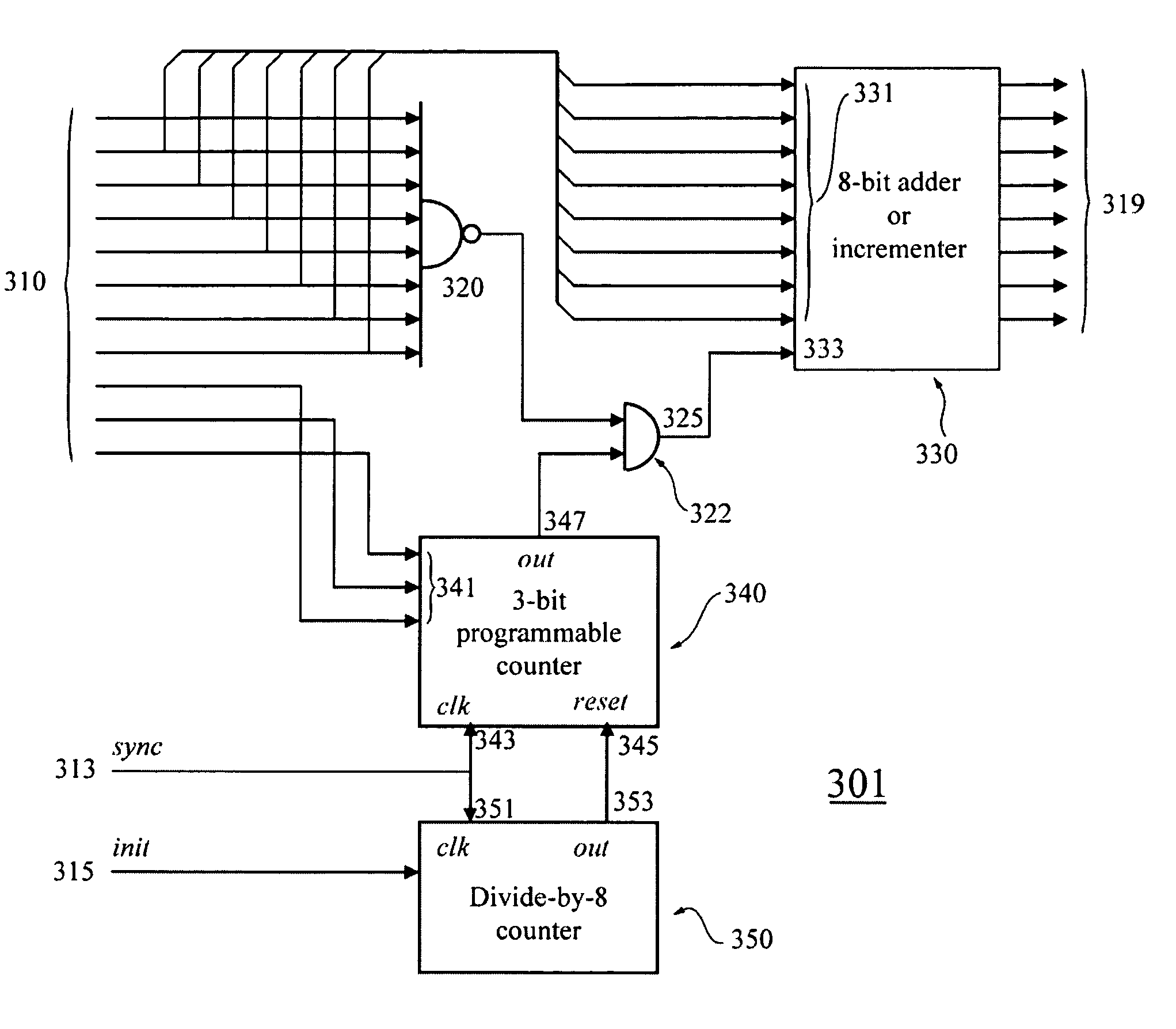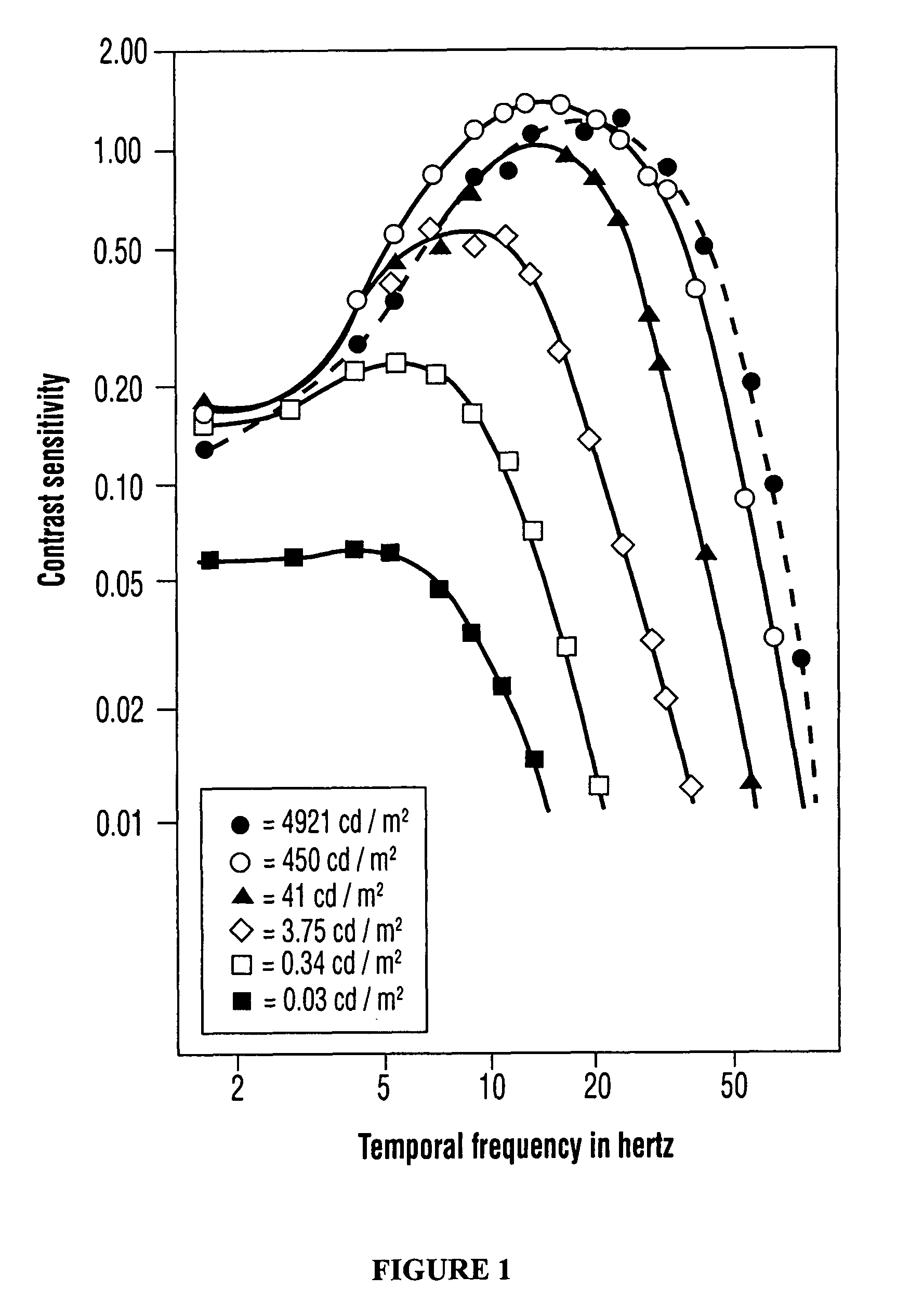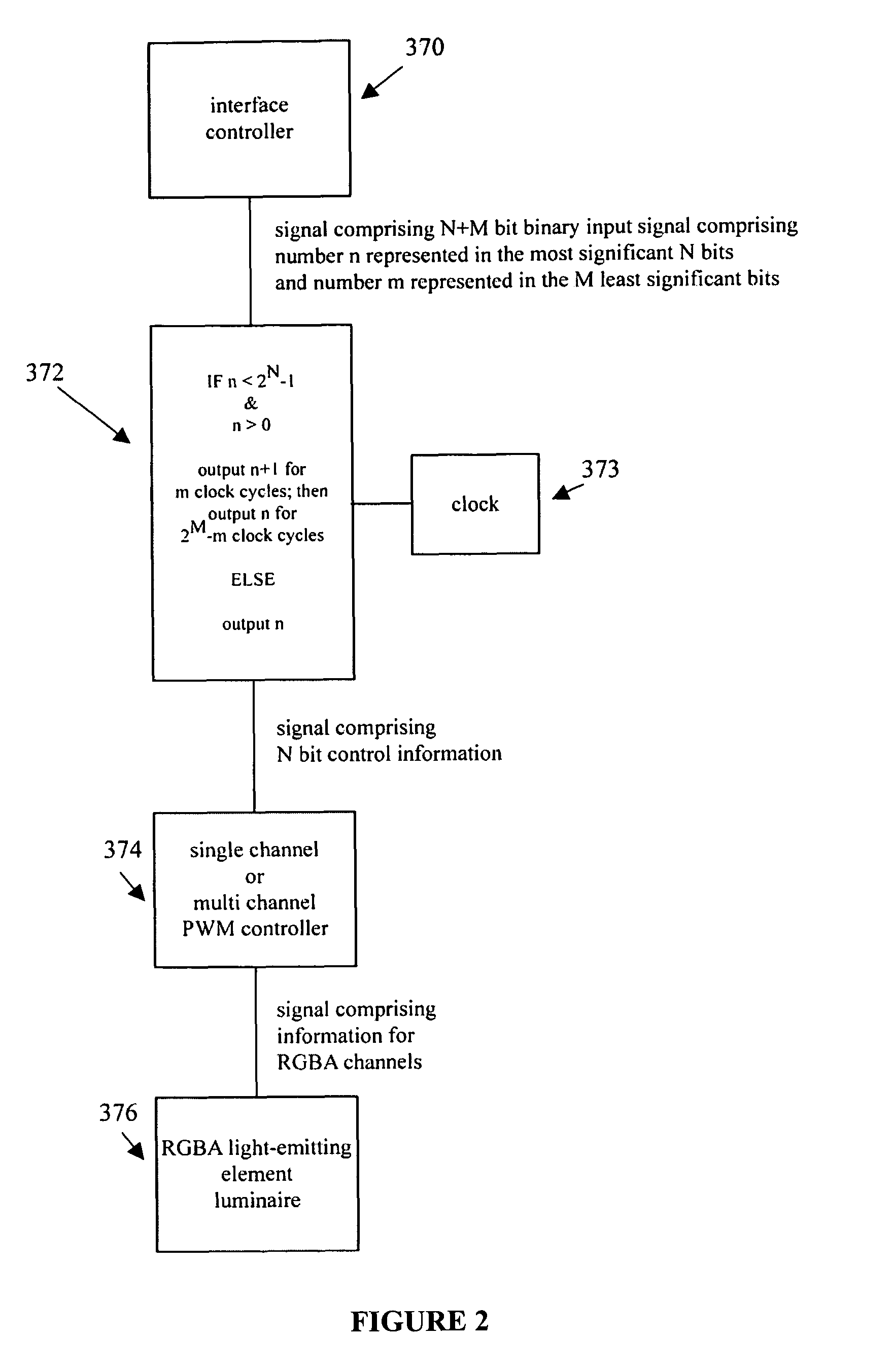Control apparatus and method for use with digitally controlled light sources
a technology of control apparatus and control method, applied in the field of light, to achieve the effect of reducing the flicker of perceivable ligh
- Summary
- Abstract
- Description
- Claims
- Application Information
AI Technical Summary
Benefits of technology
Problems solved by technology
Method used
Image
Examples
example 1
Solid-State Luminaire with Extended Pulse Code Modulation Control
[0063]According to one embodiment of the present invention a solid-state lighting luminaire can be configured as illustrated in FIG. 4, wherein the extended pulse width modulation as defined above is implemented in firmware on the controller 140, for example a commercial microcontroller, by using the extended pulse code modulation method as illustrated FIGS. 11 to 13. One or more calibrations are implemented on the controller resulting from collected data reflecting one or more of chromaticity, luminous flux, temperature of the LEDs and drive current, thereby enabling feedback control of the solid-state luminaire.
example 2
Solid-State Luminaire with Extended Pulse Width Modulation Control
[0064]According to one embodiment of the present invention a solid-state lighting luminaire can be configured as illustrated in FIG. 4, wherein the extended pulse width modulation as defined above is implemented in firmware on the controller 140, for example a commercial microcontroller, by using the extended pulse width modulation method as illustrated FIGS. 8 to 10. The controller can comprise one or a plurality of integrated 10-bit analog-to-digital converter modules, wherein other functions may also be implemented, such as for example sensor monitoring and feedback control.
example 3
Solid-State Luminaire with Extended Pulse Code Modulation Control
[0065]Referring to FIG. 4, the extended pulse width modulation method disclosed herein may be implemented in the controller 140 using the extended pulse width modulation as disclosed in FIGS. 11 to 13 implemented in hardware using for example a field-programmable gate array (FPGA) with preferably a microcontroller core. Other functions may be implemented within the luminaire including for example sensor monitoring and feedback control.
PUM
 Login to View More
Login to View More Abstract
Description
Claims
Application Information
 Login to View More
Login to View More - R&D
- Intellectual Property
- Life Sciences
- Materials
- Tech Scout
- Unparalleled Data Quality
- Higher Quality Content
- 60% Fewer Hallucinations
Browse by: Latest US Patents, China's latest patents, Technical Efficacy Thesaurus, Application Domain, Technology Topic, Popular Technical Reports.
© 2025 PatSnap. All rights reserved.Legal|Privacy policy|Modern Slavery Act Transparency Statement|Sitemap|About US| Contact US: help@patsnap.com



